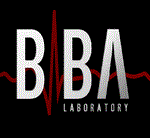Biological Systems Engineering, Department of

Biomedical Imaging and Biosignal Analysis Laboratory
Date of this Version
2012
Document Type
Article
Citation
EMBC 2012. Annual International Conference of the IEEE Engineering in Medicine and Biology Society, 2012. Pages: 2310 - 2313.
Abstract
An observational study was performed as a preliminary investigation into the use of transcranial Doppler ultrasound (TCD) for recording cerebral hemodynamic changes during multiple tasks. TCD is a method of measuring cerebral blood flow (CBF) using ultrasound transducers in contact with the surface of the head. Using the maximum flow envelope of the Doppler spectrum returning from the middle cerebral artery (MCA), standard clinical flow indices can be calculated and displayed in real time providing information concerning perturbations in CBF and their potential cause. These indices as well as flow velocity measurements have been recognized as useful in measuring changes in responses to various stimulus that can be used to indicate cardiovascular health. For this study, the pulsatility index (PI) and resistivity index (RI) were chosen since they indicate composite changes indicative of vasoconstriction and vasodilatation which are normal hemodynamic responses under appropriate conditions.
A total of eleven participants were recruited to take part in this study. Nine of these individuals had no known disability (Controls); two had experienced unilateral cerebrovascular accidents (Strokes) in the ipsilateral MCA distribution. Maximum velocity envelopes of the spectral Doppler data were recorded using a fixation device designed to stabilize two ultrasound probes (2 MHz) to sample the bilateral MCAs CBF. These measures were performed separately while the subject performed four activities: 1) rest, 2) cognitive challenge, 3) cardiovascular exercise, and 4) simultaneous exercise and cognitive challenge. Cardiovascular parameters were calculated from the data by extracting maximum (Vs) and minimum flow velocities (Vd), PI, RI, and time signatures for each cardiac cycle. The data for all participants shows significant changes in cardiovascular parameters between states of rest and exercise, as well as slight trends across time. Although the data are preliminary, they show the capability of using Doppler spectral examination of the bilateral MCAs in individuals with physical limitation performing cardiovascular exercise. The novelty of examining a population using dynamic exercise who before could not perform such exercise offers the opportunity to study the impact of exercise on global cerebral recovery in unilateral stroke with significant physical impairment.
Included in
Biochemistry, Biophysics, and Structural Biology Commons, Bioinformatics Commons, Health Information Technology Commons, Other Analytical, Diagnostic and Therapeutic Techniques and Equipment Commons, Systems and Integrative Physiology Commons


Comments
Copyright © 2012 IEEE. Used by permission.